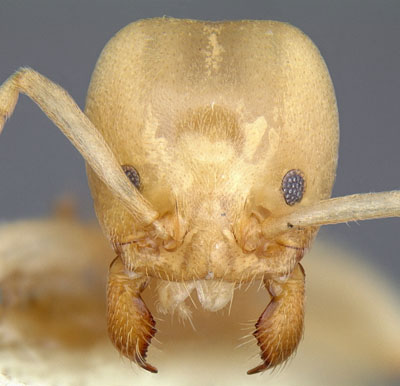
Linepithema flavescens, last seen in 1934
Linepithema flavescens, a small yellow ant from Haiti, is one of the species I re-described as part of my Ph.D. dissertation. All we know about this ant, apart from the brief notes on the specimen labels, is the external appearance of a few workers. Queens and males haven't been collected. No one has studied its ecology or behavior. The few existing museum specimens- gathered from two different field sites- may be too valuable to attempt DNA extraction.
A 1934 collection is the last time anyone has ever seen L. flavescens. As the natural ecosystems of Haiti have been entirely destroyed in the intervening years, it is possible the species is extinct. Or not. It may persist in little pockets, or in the neighboring Dominican Republic. As far as I know, no one has ever looked.
There are, quite literally, tens of thousands of invertebrate species in the same predicament. Known only from the initial taxonomic notes, and collected from forests long since felled, the remaining specimens are like fossils. There are too few scientists, no resources, and too many species like these for anyone to do so much as even send someone out for a weekend to search for them. So it is that scores of species drop out of existence, unnoticed.
- Log in to post comments

and to those that have remained undiscovered and gone extinct, that's even sadder.